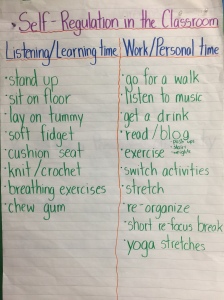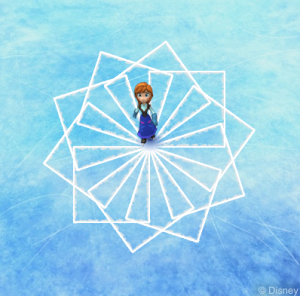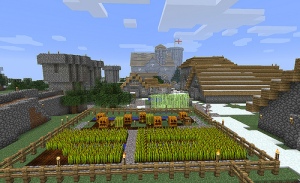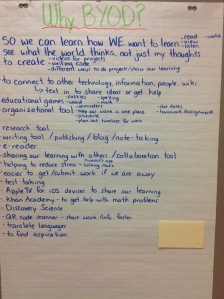I am looking for feedback on one of my introductory lesson sequences that I do with my Middle School students to set the tone for self-regulated learning (SRL). I have done some reading on the topics, attended a few lectures, and dabbled with what I have learned. I fear that I may be WAY off, and would appreciate hearing what changes I need to make to help build my understanding of SRL.
I share my goal with my students: that they will be able to be identify what they need. I know that it is VERY general and a little vague, but it truly is my ultimate goal.
I begin by asking them what they already know about Self-Regulation. Many Elementary schools in my district have embraced Self-Regulation as a whole school goal and explore many different strategies to support student learning and success. One local school uses mindful breathing during classes, transitions and at the beginning of every assembly. I know that a resource commonly accessed within my district is Stuart Shanker and his book Calm, Alert, and Learning.
However, even with a great deal of practice and support, the most common answer I receive when I ask my students “What is Self-Regulation?” is “self-control”. Many of my students equate everything that they have learned to be synonymous with learning boundaries and how to behave better in class. Some of the strategies that they have experienced sound more like co-regulating instead of self-regulation: for example, visual aides used by teachers to indicate the “energy” level of the room so that students may see that they need to make changes.
I don’t think that SRL and self-control actually have anything in common. The one piece that I take from Stuart Shanker’s work is actually from the Alert program where the key question is “How does your motor run?” We visualize our bodies as finely tuned engines, and some are running at a nice steady pace, some are almost stalling out, and some are absolutely racing. Knowing glances are shared around the room as we start thinking about how our motors are run, and how the motors of our friends may be running.
We discuss how it looks and feels to be running at “high” speed. Some of the kids share their own experiences: “it’s hard to sit still.” “I can’t sleep at night.” “I am always in trouble for tapping my pencil.” “I count the minutes until gym.” The kindred spirits in the room nod in understanding.
We talk about how it looks and feels to run at “low” speed. Some students share how difficult it is to get out of bed in the mornings. Others say how they almost fall asleep if the teacher talks too long. Some students dread gym. At this point someone always asks if it is normal to have a blend of the two feelings; if it is normal to have high speed and low speed moments all day long? I turn the question back to the group, and we figure out that it is totally normal, almost everyone fluctuates during the day. Some students do run at high speed ALL day, and that is ok too.
We spend a lot of time discussing “Just Right”. Motors that are running too high or too low have difficulty attending, listening and learning. It is a struggle, a battle, a huge effort to learn in that condition. After we figure out what “Just Right” feels like and looks like, we talk a little about how that might be the optimum time and space for learning.
At this point, I notice my students language switching back to words about control and behavior, so I turn the discussion around to me. I drink tea while teaching. I make tea as frequently as I can during the day. The kids know this, the laugh about it, and I receive gifts of tea at Christmas. It’s a lovely thing! I ask my students to reflect on my energy level – do they think that my motor runs “high”, “low” or “just right”? The answer surprises some of them. I constantly feel the need to move. My motor races (hence my EDCI 569 Learning Project – mindfulness and meditation) and I am happiest when I am on the move. I tell them that my tea is my “fidget” and ask them to figure out why. Their answers were beautiful:
- It’s a warm and soothing hot drink, it probably calms you down
- You get to take a few minutes to choose exactly which tea you want to drink
- You get to use your favourite mug, and that gives you something to hold on to
- You get to walk to the back of the room to boil the kettle, then go back again to pour the water
- The smell is nice, it probably makes you happy
- It has a lot of water in it, and water is good for your brain
Their answers are perfect, and some were ideas that I hadn’t even recognized! Making and drinking tea is a solution that works for me when I need to move or regain focus.
After isolating what the need was, we talked about different ways to get the exact same need met. We brainstormed all of the ways we could get our need to move met: running screaming through the halls, dancing on our desk tops, playing the drums, etc. At the end of the list, the realization hit that every single item on the list would get a student in trouble at school. So, why was making tea ok? Two things became apparent: our actions have to be 1.) appropriate for the time and space and, 2.) could not impact other learners negatively.
We spend at least a week (sometimes longer) with small 3-D triangles made out of paper on our desks. These triangles say High, Low, and Just Right. I ask the students to monitor their own energy levels throughout the day, just to increase their own awareness. I also participate in this, using my own triangle. It’s interesting to hear the students discuss their observations with each other: “You look like you are about to fall asleep – you should change to Low.” “Stop kicking my chair – are you feeling High Energy right now?”
The next step of this lesson sequence was for my learners to meet in partners or small groups and create a T-Chart. One side of the T-Chart was “Low” and one was “High”. I asked them to brainstorm lists of what they do when they are feeling low energy or high energy that helps to move them towards feeling “Just Right”. The same activities might appear on both sides of the T-Chart, and the partners did not have to agree on the activities. The whole point was the gather as many ideas as possible.
I collect the lists and look at the ideas. I bring back a list of the most common ideas – at least the ones that won’t get a kid in trouble in school – and we review it together. We circle some of the ideas that we can’t figure out how to fit in at school (issues with supervision or safety), and then we look at what is left. I lead my students in a discussion about our school day: there are basically two main times during a school day: time when someone is speaking (either a teacher, or a student, or partner talk), and time for working or practicing. We create a new T-chart with those two headings and discuss the behaviors relevant to both times. When someone is speaking, it is important to be able to listen, to see the speaker, and to be able to interact with what is being said in some way. During working time, it is important that everyone is able to work.
We take the ideas from the list and sort them into the T-chart. It becomes a series of agreements. When we are done, we realize that the Listening time is most structured. Our class rules become that no one needs to ask permission for the things on the list, everyone has permission to do everything on the list. Everything that is on the Listening side of the T-chart is also pertinent to the Working side of the T-chart.
Our classroom begins to look differently over time. Students learn that they don’t have to sit down in their desks to listen. They can sit on the floor or stand at the back. They can lay on their bellies to do their Math work. They can take a Yoga break, lift weights, switch activities, chew gum, and knit or crochet. The only expectation is that getting your needs met can’t disrupt the other learners.
This has worked for my students so far. They seem happier, focused and able to identify how they are feeling and what they need to do in order to succeed.
What do I need to change? Am I on the right track?






